|
Hello all, just a quick note from me. Apologies for the lack of a post in a while. I am currently writing my dissertation and this is taking up most of my time! Hopefully I will have time to continue my posts on the Decade Volcanoes soon.
I will also be contributing to the website Earthquake-Report.com, with various comments from time to time on volcano related phenomena. My first post was today about the earthquake swarm beneath El Hierro. Some new features to come... Book reviews and I am going to do a little experimenting with videos! Tom Following on from yesterdays post on Arthurs Seat, here is a brief post on Castle Rock which Edinburgh Castle sits upon. 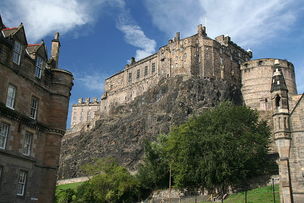 Edinburgh Castle atop the volcanic plug from wikipedia. Castle Rock is the remains of an ancient roughly 350 million year old volcanic plug. A volcanic plug forms when magma within a conduit solidifies. Castle Rock has also shielded the sedimentary rock during glaciations which has allowed the formation of a sloped end. The rock itself is called Dolerite, which is a type of Basalt. Dolerite cools more slowly than other basalts and as a consequence can often have larger crystals. For those of you who have ever been to Edinburgh and seen Arthurs Seat or even hiked up it, you will know that, once at the summit, it is one of the most awe-inspiring views of a city and can be quite windy! It is situated within Holyrood Park, which can be found very easily by walking to the end of the Royal Mile. And yes, it is the remains of an ancient volcano! 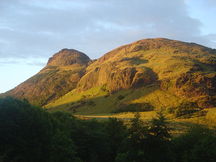 From wikipedia, Arthurs Seat on the left. The age of Arthurs seat is thought to be around 350 million years and as a consequence of its age has seen many glaciations which have scraped and eroded to leave the formation which is currently seen today. The summit of Arthurs seat is what remains of the volcanic conduit, whilst the long outline (photo at bottom) seen from the bottom of the royal mile is what remains of an ancient exposed basaltic sill. To the east of Arthurs seat is what remains of the volcanic cone which has been created from the outpourings of lava and ash from eruptions of the volcano. The volcanism in this region is the result of attempted rifting and the attempted seperation of rocks. From my understanding, and I am sure someone can tell me if I am wrong, the extension of the crust allows magma from depth to migrate up caused by a lowering of the melting point due to a decrease of pressure. For further information on Arthurs Seat and the geology of Edinburgh I highly recommend this site - the Geography Department of the University of Edinburgh. I will be uploading a panorama taken from the summit of Arthurs Seat soon, and will be posting tomorrow on the rock which the famous Edinburgh Castle sits upon. It has been a very busy couple weeks for me and will continue as such for a while... I have decided to put up this post, happy guessing! Back to normal posting soon, I will be writing a weekly contribution to earthquake-report.com in the coming weeks so watch this space! After the sensationalist claims which have been cropping up over the last couple of days, as has been reported in the volcanism blog and the eruptions blog, I thought I would do a brief post on the volcanics in this area of Australia. The Global Volcanism Program has a brief overview of the Newer Volcanics Province (NVP for short). Overall there has been volcanic activity in this area for the past 60 million years, the NVP is associated with the volcanism in the area over the past 5 million years and hence has been termed the 'Newer Volcanics'. The area in question spreads over 15,000 km2 of central and western Victoria, and is an excellent example of intra-plate volcanism as many of the volcanic formations left behind are still visible today. Overall there are around 400 volcanic vents and shield volcanoes. They can generally be described as monogenetic in nature, which means that these volcanoes are only active from the same vent once. 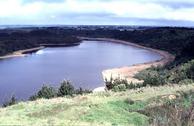 From the GVP, photo of a maar. The last eruptions in this area occurred around 5500 years ago and was probably from Mount Gambier followed by a later eruption of Mount Schank 5000 years ago. In this area the volcanism is mildly explosive and effusive because of the basaltic nature of the lava. The area is dominated by large lava voluminous lava flows which have filled large valleys. Other formations in the area are scoria cones, ash/pyroclastic layers, maars and tuff rings. Maars are formed when magma comes in to contact with groundwater and explodes on contact. This creates a crater in the Earth and these commonly then fill with water, as is seen in the photo above. This type of volcanism is called phreatomagmatism. Tuff rings form by the same mechanism but do not fill with water after an event. Study in this area has not been extensive but enough has been done to understand the nature of the volcanic field and the hazards it prevents. One thing is for certain, as has been stated in other blogs (listed above), using the word overdue in volcanology is not good practice, and is a bit like a train in the UK, you never really know when it will turn up! Sources Matchan and Phillips, 2011. New 40Ar/39Ar ages for selected young (<1 Ma) basalt flows of the Newer Volcanic Province, southeastern Australia. Quaternary Geochronology 6 (3-4), pp. 356-368 Global Volcanism Program |
Archives
July 2023
|
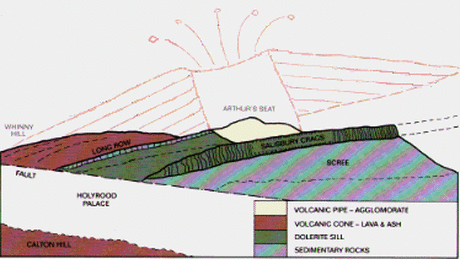

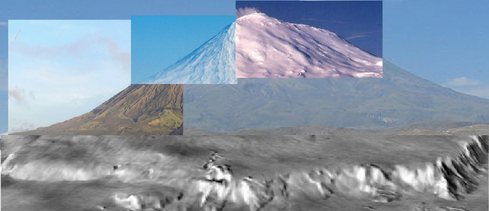
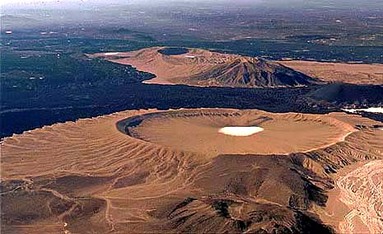

 RSS Feed
RSS Feed